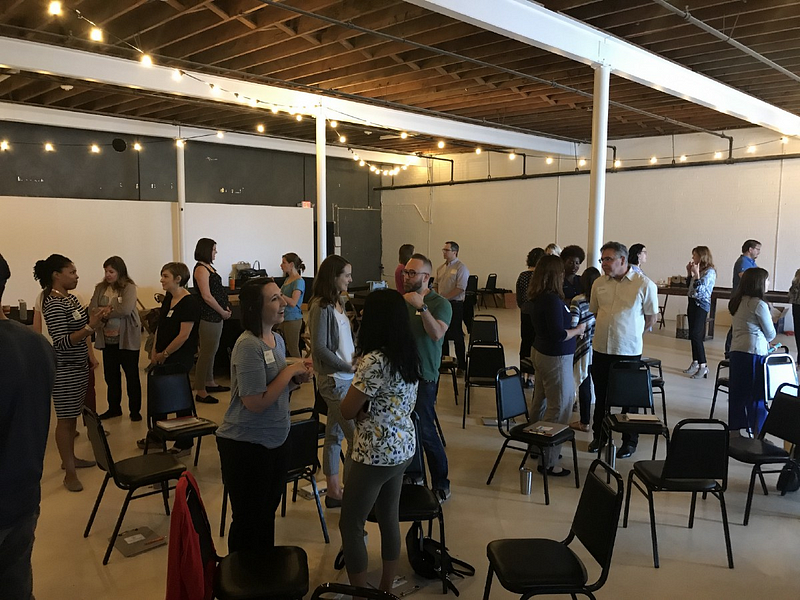Wrap up your next project with some of my favorite activities for reflection
This is part of my workshop recipe series where I’ll be sharing methods for facilitating successful workshops. I’ll break down the essentials of a Design Sprint, Innovation Workshop, Leadership Retreats, Executive Summits, and more. Check out the others here.
I’m a huge fan of continuous improvement and have been facilitating retrospectives for many years. I first picked up the habit when I was running Agile development teams as a CTO. Now I continue to use the process at Voltage Control for clients, internal workshop review, and general business operations improvements.
Historically, I used a set of 3 simple questions to frame the retrospective: What did we do well? What did we do wrong? What can we do better in the future? One hack that I found helpful was to ask the team to submit their answers prior to the meeting, so we could review them together as a team. But, I’ve also expanded my repertoire of retrospective techniques and activities.
Here, I’m sharing a few methods that work nicely for retrospectives. Use all or some of them, depending on how much time you have and what you want to accomplish.

Protip: Run a retrospective or post mortem at the end of every project. Too many people only run them on the failed projects. Even successful projects likey had moments of struggle, so there is always an opportunity to learn.
Activities for Reflecting on Your Design Sprint as a Group
1. Revisit the Goal & Questions
15 min
Start by framing the retrospective around the original goal of the Sprint. Simply state the goal and have the team discuss together, especially if time has lapsed. After reviewing the goal, shift focus to your Sprint Prototype questions. If you’ve used the Voltage Control Sprint Scorecard, go back and review the graph and how everyone scored the testers against these questions.
2. What, So What, Now What?
45 mins
“What, So What, Now What?” is a technique from Liberating Structures (LS) that help groups reflect on a shared experience to build understanding while avoiding unproductive conflict. You collect facts about “What Happened,” make sense of these facts with “So What” and, finally, uncover what actions logically follow with “Now What.”
The activity in itself could be your retrospective. What I also like about this one is that it forces you to take time to observe and synthesize before jumping to solutions and conclusions.

Method Steps
- Individuals write down observations that stood out. 1 min.
- Discuss observations in a small group for 2–7 min.
- Share with the whole group 2–3 min.
- Capture the important WHATs on a whiteboard.
- Individuals write down patterns, hypotheses, and conclusions. 1 min
- In a small group, discuss patterns, hypotheses, and conclusions 2–7 min.
- Small groups share with the whole group. 2–5 min.
- Capture the important SO WHATs on a whiteboard.
- Individuals write down next steps 1 min.
- In a small group discuss next steps 2–7 min.
- Small groups share with the whole group. 2–10 min.
- Capture the important NOW WHATs on a whiteboard.
3. TRIZ
35 mins
The TRIZ method is one of my absolute favorites because it’s all about creative destruction. It forces you to look at what didn’t work in your project. Instead of creating a list of things to do, you identify things to stop doing. I think that the opportunity to be vulnerable as a team creates more room for great things to happen.

Method Steps
- Introduce the idea of TRIZ.
- Identify an unwanted result that the group will focus on. If needed, have the groups brainstorm and pick the most unwanted result. 5 min.
- Each group uses 1–2–4-All to make a list of all it can do to make sure that it achieves this most unwanted result. (1–2–4-All refers to working alone, then in pairs, then foursomes, and finally as a whole group.) 10 min.
- Each group uses 1–2–4-All to make a list of all that it is currently doing that resembles items on their first list. 10 min.
- Each group uses 1–2–4-All to determine for each item on its second list what first steps will help it stop this unwanted activity/program/procedure. 10 min.
FREE DOWNLOAD
Get Our LS Triz
Using anti-patterns to unlock value and question the status quo. Do not identify net-new behaviors, instead focus on works case scenarios associated with the way your team functions, products, processes, or service offerings.
4. “What I Need From You”
70 mins
The “What I Need From You” technique is one I would recommend when you had a project or sprint where the team might not be connecting or understanding each other. It won’t be necessary for every retrospective but helps people in different roles and disciplines improve how they ask each other for what they need to be successful.

Method Steps
- Select a goal or challenge to address.
- Organize members into 3–7 functional clusters around the room.
- Reiterate the goal or challenge being addressed.
- Emphasize that requests must be clear and specific if they are to receive an unambiguous yes or no response.
- Make it clear that no answers other than yes, no, I will try, and whatever will be allowed.
- Functional clusters use 1–2–4-All to make a list of their top needs from each of the other functions in the room. (1–2–4-All refers to working alone, then in pairs, then foursomes, and finally as a whole group.)
- Functional groups express needs are expressed as requests that can be delivered with care and nuance in the following form: “What I need from you is _____.”
- Clusters reduce their lists to two top needs
- Each functional cluster selects a spokesperson
- All spokespersons gather in a circle in the middle of the room.
- Spokespersons state their two needs to each of the other spokespersons around the circle.
- Spokespersons take notes of requests, but no one gives answers or responses. 15 min.
- Working individually, each spokesperson writes down one of four responses to each request: yes, no, I will try, or whatever. 5–10 min.
- Addressing one spokesperson in the group at a time, every spokesperson in the circle repeats the requests made by him or her, then shares his or her responses (yes, no, I will try, or whatever). No discussion! No elaboration! 10 min.
- Debrief as a group
5. 15% Solutions
20 min
15% Solutions is a simple, but powerful activity. Use this one when you don’t have a ton of time but want to get a group focused on what they are going to do next. The activity helps individuals think about small tweaks they can make in their work to move toward the larger goal. I think it’s great for building momentum and creating focus.

Method Steps
- Introduce the 15% Solutions concept.
- Each person generates his or her own list of 15% Solutions. 5 min.
- Individuals share their ideas with a small group. 3 min. per person
- Group members ask clarifying questions and offer advice. 5 to 7 min. person
Next time you need to reflect on a critical project or Design Sprint, refer to these activities and build an agenda that works for you. Any of the methods above can be pieced together to fit your needs and time constraints. For more inspiration on your retrospective, I also recommend this article on how Etsy runs “Blameless Post-Mortems.”
If you want more tips about running Design Sprints, check out all of our articles here.


